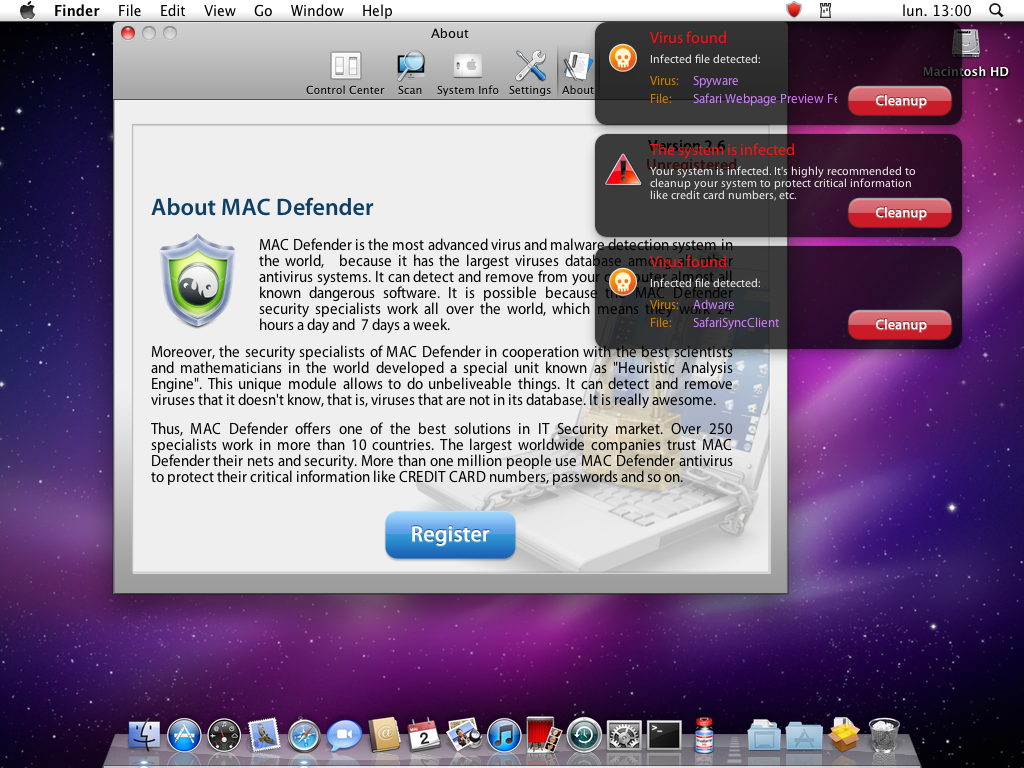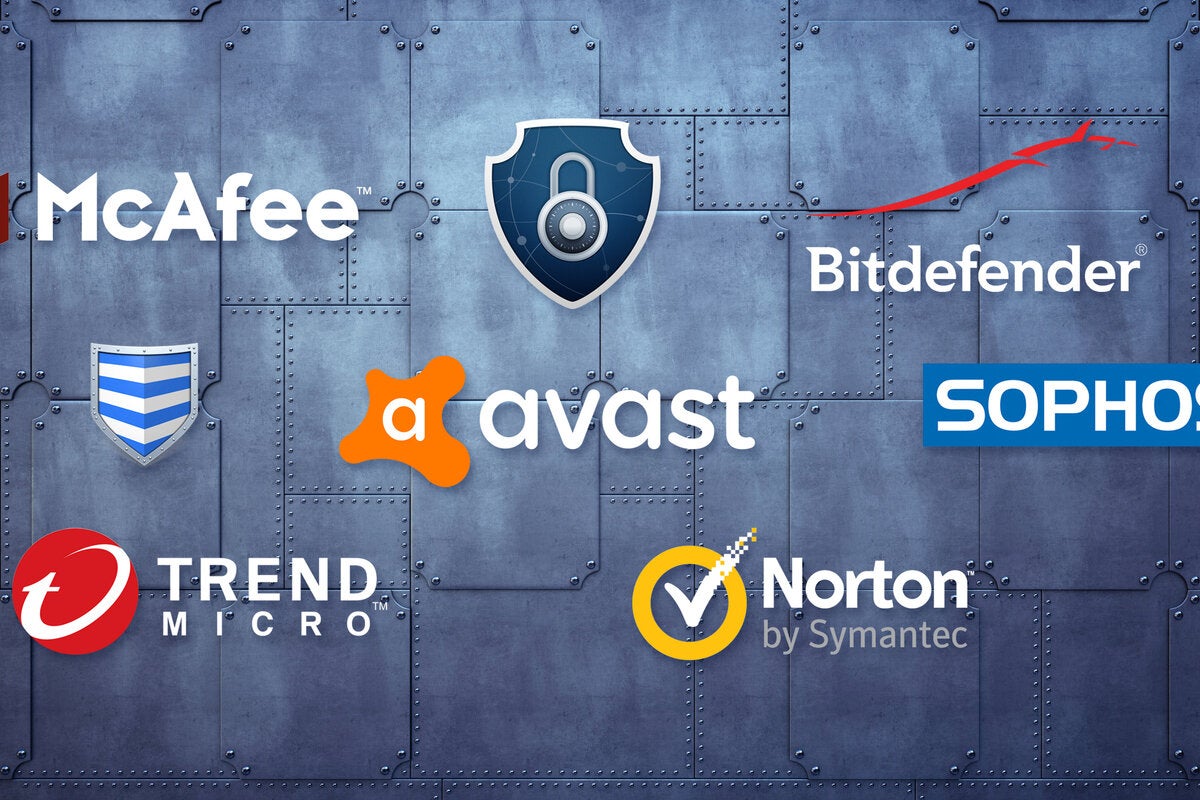Mac os x free download - PdaNet for Android (Mac OS X Installer), Mac OS Theme, Launcher for Mac OS Style, and many more programs. Panda antivirus, free vpn mac, mac os x server. This topic describes how to install, configure, update, and use Microsoft Defender ATP for Mac. Caution Running other third-party endpoint protection products alongside Microsoft Defender ATP for Mac is likely to lead to performance problems and unpredictable side effects. If non-Microsoft endpoint. Download antivirus for mac software from Comodo. Free antivirus for mac secures your PC with advanced security solutions and improve security. About Us; Resources. Mac OS X 10.4; Mac OS X 10.5 (Client and Server) Mac OS X 10.6 (Client and Server) Minimum Hardware Requirements. Mac Intel i386; Mac Intel x8664. 2006 has already seen the first dangerous virus threat for Mac OS X, proving that Macs are not immune to viruses. Ryan Faas is your guide to understanding viruses and the potential risks they can pose to Macs and using the tools to keep you Mac virus-free. (although ClamXav is not an option for Mac OS X Server). Some antivirus packages.
We design Mac hardware and software with advanced technologies that work together to run apps more securely, protect your data, and help keep you safe on the web. And with macOS Catalina available as a free upgrade, it's easy to get the most secure version of macOS for your Mac.*
Apple T2 chip.
The next generation of security.
The Apple T2 Security Chip — included with many newer Mac models — keeps your Mac safer than ever. The Secure Enclave coprocessor in the Apple T2 chip provides the foundation for Touch ID, secure boot, and encrypted storage capabilities. Touch ID gives you a seamless way to use your fingerprint to unlock your Mac, fill passwords in Safari, and make purchases with Apple Pay. Secure boot helps ensure that you are running trusted operating system software from Apple, while the Apple T2 chip automatically encrypts the data on your Mac. So you can be confident knowing that security has been designed right into the architecture of your Mac, from the ground up.
Apple helps you keep your Mac secure with software updates.
The best way to keep your Mac secure is to run the latest software. When new updates are available, macOS sends you a notification — or you can opt in to have updates installed automatically when your Mac is not in use. macOS checks for new updates every day, so it's easy to always have the latest and safest version.
Protection starts at the core.
The technically sophisticated runtime protections in macOS work at the very core of your Mac to keep your system safe from malware. This starts with state-of-the-art antivirus software built in to block and remove malware. Technologies like XD (execute disable), ASLR (address space layout randomization), and SIP (system integrity protection) make it difficult for malware to do harm, and they ensure that processes with root permission cannot change critical system files.
Download apps safely from the Mac App Store. And the internet.
Now apps from both the App Store and the internet can be installed worry-free. App Review makes sure each app in the App Store is reviewed before it's accepted. Gatekeeper on your Mac ensures that all apps from the internet have already been checked by Apple for known malicious code — before you run them the first time. If there's ever a problem with an app, Apple can quickly stop new installations and even block the app from launching again.
Stay in control of what data apps can access.
Apps need your permission to access files in your Documents, Downloads, and Desktop folders as well as in iCloud Drive and external volumes. And you'll be prompted before any app can access the camera or mic, capture keyboard activity, or take a photo or video of your screen.
FileVault 2 encrypts your data.
With FileVault 2, your data is safe and secure — even if your Mac falls into the wrong hands. FileVault 2 encrypts the entire drive on your Mac, protecting your data with XTS-AES 128 encryption. And on Mac systems with an Apple T2 Security Chip, FileVault 2 keys are created and protected by the Secure Enclave for even more security.
Designed to protect your privacy.
The most secure browser for your Mac is the one that comes with your Mac. Built-in privacy features in Safari, like Intelligent Tracking Prevention, help keep your browsing your business. Automatic strong passwords make it easy to create and use unique passwords for all the sites you visit. And iCloud Keychain syncs those passwords securely across all your devices, so you don't have to remember them. You can also easily find and upgrade any weak passwords you've previously used (and reused and reused and reused).
Automatic protections from harmful sites.
Safari also helps safeguard you against fraudulent websites and those that harbor malware — before you visit them. If a website seems suspicious, Safari prevents it from loading and notifies you. And when connecting to unencrypted sites, Safari will warn you. So everything you need to browse without worry is right at your fingertips.
Find your missing Mac with Find My.
The Find My app combines Find My iPhone and Find My Friends into a single, easy-to-use app on Mac, iPad, and iPhone. Find My can help you locate a missing Mac — even if it's offline or sleeping — by sending out Bluetooth signals that can be detected by nearby Apple devices. These devices then relay the detected location of your Mac to iCloud so you can locate it in the Find My app. It's all anonymous and encrypted end-to-end so no one — including Apple — knows the identity of any reporting device or the location of your Mac. And it all happens silently using tiny bits of data that piggyback on existing network traffic. So there's no need to worry about your battery life, your data usage, or your privacy being compromised.
Keep your Mac safe.
Even if it's in the wrong hands.
All Mac models with the Apple T2 Security Chip support Activation Lock — just like your iPhone or iPad. So if your Mac is ever misplaced or lost, the only person who can erase and reactivate it is you.

macOS Security
Home > Articles > Apple > Operating Systems
␡- What Defines a Virus?
Best Mac Os X Antivirus

Best Antivirus Mac Os
Free Antivirus Mac Os X
Like this article? We recommend
Like this article? We recommend
Mac users have had a long history of feeling smug about the number of viruses that routinely infect PCs running Windows. Earlier this year, however, there was news about the first potentially dangerous Mac OS X virus. This virus, known as OSX/Leap (or MacOS/Leap, CME-4, and OSX/Leap.a), was distributed via iChat as a series of images in a compressed file (typically described as screenshots of Apple's upcoming Mac OX 10.5, known as Leopard). When the file was decompressed, it turned out to be a Unix executable that could delete files from a workstation and use iChat to send copies of itself to other users. A security flaw in Safari that would enable Unix executables to run automatically when visiting a malicious Web site also made news around the same time (although preventing this was easily accomplished by deselecting the Open Safe Files After Downloading option in the Safari preferences).
Both of these events illustrate that Mac users are not immune to malicious software (a.k.a. malware) threats. I use the term malware because neither of these threats meets the classic definition of a computer virus. In fact, many of the news stories about the OSX/Leap threat focused on defining whether it was in fact a virus, worm, or a trojan horse. They are all variations on the way a piece of malicious code functions and propagates, although most computer users use the term virus to refer to all of them.
What Defines a Virus?
Malware refers to a whole host of malicious software. It can include viruses, worms, trojan horses, code fragments, malicious Web sites, and other nasty things. For the sake of this article, we'll talk specifically about nasty things that can infect a Mac OS X computer or server. This leaves out suspicious pieces of spam that can determine whether your email address is active (and send you more spam) or be part of phishing schemes that send you to what appear to be legitimate Web sites in an attempt to get you to provide personal and/or financial information. We'll also leave out the majority of spyware because it is not yet an issue for Mac OS X users (although the vulnerability in Safari could be an open door for Mac spyware authors).
Related Resources

macOS Security
Home > Articles > Apple > Operating Systems
␡- What Defines a Virus?
Best Mac Os X Antivirus
Best Antivirus Mac Os
Free Antivirus Mac Os X
Like this article? We recommend
Like this article? We recommend
Mac users have had a long history of feeling smug about the number of viruses that routinely infect PCs running Windows. Earlier this year, however, there was news about the first potentially dangerous Mac OS X virus. This virus, known as OSX/Leap (or MacOS/Leap, CME-4, and OSX/Leap.a), was distributed via iChat as a series of images in a compressed file (typically described as screenshots of Apple's upcoming Mac OX 10.5, known as Leopard). When the file was decompressed, it turned out to be a Unix executable that could delete files from a workstation and use iChat to send copies of itself to other users. A security flaw in Safari that would enable Unix executables to run automatically when visiting a malicious Web site also made news around the same time (although preventing this was easily accomplished by deselecting the Open Safe Files After Downloading option in the Safari preferences).
Both of these events illustrate that Mac users are not immune to malicious software (a.k.a. malware) threats. I use the term malware because neither of these threats meets the classic definition of a computer virus. In fact, many of the news stories about the OSX/Leap threat focused on defining whether it was in fact a virus, worm, or a trojan horse. They are all variations on the way a piece of malicious code functions and propagates, although most computer users use the term virus to refer to all of them.
What Defines a Virus?
Malware refers to a whole host of malicious software. It can include viruses, worms, trojan horses, code fragments, malicious Web sites, and other nasty things. For the sake of this article, we'll talk specifically about nasty things that can infect a Mac OS X computer or server. This leaves out suspicious pieces of spam that can determine whether your email address is active (and send you more spam) or be part of phishing schemes that send you to what appear to be legitimate Web sites in an attempt to get you to provide personal and/or financial information. We'll also leave out the majority of spyware because it is not yet an issue for Mac OS X users (although the vulnerability in Safari could be an open door for Mac spyware authors).
Related Resources
Antivirus For Mac Os X Server Commands
- Book $55.99
- eBook (Watermarked) $55.99
- Web Edition $55.99
